Разделы презентаций
- Разное
- Английский язык
- Астрономия
- Алгебра
- Биология
- География
- Геометрия
- Детские презентации
- Информатика
- История
- Литература
- Математика
- Медицина
- Менеджмент
- Музыка
- МХК
- Немецкий язык
- ОБЖ
- Обществознание
- Окружающий мир
- Педагогика
- Русский язык
- Технология
- Физика
- Философия
- Химия
- Шаблоны, картинки для презентаций
- Экология
- Экономика
- Юриспруденция
Volumetric Global Illumination At Treyarch
Содержание
- 1. Volumetric Global Illumination At Treyarch
- 2. Volumetric Global IlluminationGI in volume textureLean texture dataIBL baked from probesConvex blend shapes
- 3. Presentation OrderWhere we startedEvolution along the wayWhere we ended up
- 4. Traditional Approach: Lightmaps Could be ok, but…
- 5. Lightmap Downsides Works poorly on detailed or intersecting geometry
- 6. Lightmap Downsides Doesn’t work at all on dynamic geometry
- 7. Lightmap Downsides Software ray-tracing and shading takes forever
- 8. Lightmap Downsides Results not visible in world editor
- 9. Process of InventionDeferred RendererReflections already presentSo how do we apply deferred GI?
- 10. Reflection Probes as Diffuse DataHigher Mips: convolved specular [DROBOT13]Lowest Mip: diffuse irradiance Real time IBL
- 11. Occlusion Is A Problem
- 12. Visibility Is A ProblemWhere the probe doesn’t seeLooks like shadows
- 13. Irradiance Volume[TATARCHUK05]
- 14. Render a Reflection Probe Per Voxel?138 Volumes
- 15. Collect Colors From Reflection ProbesRe-project cube mapsCombine to fill holes [BUEHLER01]
- 16. In Practice4096 rays per voxel15 neighbors consideredMissed rays are in-painted
- 17. Re-Project From Existing Probes
- 18. ReprojectionNeighbor candidates sorted based on distanceWhat about spec?
- 19. ReprojectionAngle and distance to surface defines a solid angle in the cube map
- 20. ReprojectionSample area validated against depth pyramidIf visible appropriate mip sampled
- 21. Reprojection Caluclation
- 22. Reprojection CalculationdistFromUnitCube = √( 1 + u2
- 23. Biggest BenefitHardware renderingRe-render to get bouncesOnly have to ray-trace and re-project once
- 24. Texture EncodingFlat Color?
- 25. Ambient / Highlight / Direction?Texture Encoding
- 26. Second Order Spherical Harmonic?Texture Encoding
- 27. Ambient Cube! [MCTAGGART04]BC6H CompressedTexture Encoding
- 28. Volume Texture Layout
- 29. Performance BenefitsOnly 3 samplesHardware trilinear filteringEvaluation: color[n]
- 30. Light Leaking Is A Problem
- 31. Common ApproachAdjust trilinear Based on normal [SILVENNOINEN15]Our approach needs to be more reliable
- 32. More Voxel DataPlanesSigned distance fieldBad artifacts
- 33. Solve With Shaping
- 34. Click To Size Boxes
- 35. Click To Add BoxesAuto-parent on creation
- 36. Voxels Near Walls
- 37. Consider Backfaces
- 38. Complex Room Shapes
- 39. Solution: Convex Shapes
- 40. Multiface VolumesClick to add and remove faces.
- 41. Multiface Volume EditingDrag / Cut / Slice / Rotate
- 42. Subtract ShapesCSG addThen subtract
- 43. Override VolumesLike priorityOnly two levels.
- 44. Runtime ImplementationCull against volume AABB’s to build
- 45. Example GI Volumestruct PlaneGroup { float4
- 46. Group Size?[6]+[6+6+…?[6]+[4+4+...?[4]+[4+4+…?[8]+[2+2+…?
- 47. Shader Exampleattenuation = 0;groupAtten = 1;for (
- 48. Why Not K-DOPs?KDOP – k-sided Discrete Oriented PolytopePairs of planes or slabsInstead of individual planesX
- 49. Runtime ImplementationSample three ambient cube values depending on normalBlend results between all volumes
- 50. Challenges
- 51. Problem: Geo Within Voxels
- 52. Solution: Smart Centers
- 53. Invalidate Near Geometry
- 54. Empty Space Skip
- 55. Problem: Seams
- 56. Solution: Volume Smoothing
- 57. Careful Lighting Artistry
- 58. Auto Volumes?“Do-Everything Button”
- 59. Volume Blending And DensityVolume Overdraw Per TileDebug Tools
- 60. Reflections
- 61. Reflection Planes[LAGARDE12]
- 62. Clever Artistry
- 63. Reflection Plane Parallaxfloat reflectionMip = ( 1
- 64. Parallax Fade Out
- 65. Reflection Brightness Correction[LAZAROV13]
- 66. Reflection Brightness Correction
- 67. Max specular brightness is just a guess
- 68. Pros:As good or better quality than light maps
- 69. Pros:Less than 2ms for reflections and GI
- 70. Pros:Works on all geometry
- 71. Pros:Less baking time with incremental baking
- 72. Pros:Baking is done in editor
- 73. Pros:Moving and changing GI
- 74. Pros:Loose connection between light and geo
- 75. Cons:Takes set up time
- 76. Cons:Training is hard
- 77. Cons:Either lower resolution or more memory use in game
- 78. Cons:Need beefy dev machines (48Gb RAM and 12Gb VRAM)
- 79. Cons:Development challenges
- 80. Special ThanksTreyarch:Dimitar Lazarov – Original IdeaKevin Myers
- 81. References[DROBOT13] DROBOT, M., 2013. Lighting Killzone: Shadow
- 82. Скачать презентанцию
Слайды и текст этой презентации
Слайд 9Process of Invention
Deferred Renderer
Reflections already present
So how do we apply
deferred GI?
Слайд 10Reflection Probes
as Diffuse Data
Higher Mips:
convolved specular
[DROBOT13]
Lowest Mip:
diffuse irradiance
Real time IBL
Слайд 14Render a Reflection Probe Per Voxel?
138 Volumes × 403 Voxels
× 6 Faces
÷ 60 FPS ÷ 60 Seconds
= 14,720 Minutes
(≈ 10 Days)Слайд 22Reprojection Calculation
distFromUnitCube = √( 1 + u2 + v2 );
// Compensation for cube-map shape.
angleOfVoxel = 4 * PI /
numSamples; // Solid angle from voxel.inSqrt = 1 + distFromVoxel2 * angleOfVoxel * ( angleOfVoxel – 4PI ) / ( 4 * PI2 * distFromProbe2 );
angleOfProbe = 2PI * ( 1 – √inSqrt ); // Solid angle from reflection probe.
cubeRes = 1.0f / √( angleOfProbe * distFromUnitCube3 ); // Resolution needed for sample.
mipLevel = clamp( mipCount – log2( cubeRes ), 0, mipCount ); // Mip level to use.
return mipLevel;
Слайд 23Biggest Benefit
Hardware rendering
Re-render to get bounces
Only have to ray-trace and
re-project once
Слайд 29Performance Benefits
Only 3 samples
Hardware trilinear filtering
Evaluation:
color[n] = normal2 ∙ float3(
Xsample[n], Ysample[n], Zsample[n] )
color = xVolume.SampleLevel( coord ) * normal.x
* normal.x +yVolume.SampleLevel( coord ) * normal.y * normal.y +
zVolume.SampleLevel( coord ) * normal.z * normal.z;
Слайд 31Common Approach
Adjust trilinear
Based on normal
[SILVENNOINEN15]
Our approach needs
to be more
reliable
Слайд 44Runtime Implementation
Cull against volume AABB’s to build a list of
volumes
Per pixel calculate attenuation on visible volumes
Convex hull CSG
Groups of
six planes either extended, combined or subtractedСлайд 45Example GI Volume
struct PlaneGroup
{
float4 planes[6]; // Groups
of six planes.
bool subtractive; // Per group, specifies
whether it adds or subtracts.bool finished; // Per group, whether it should be combined with the previous.
}
struct GIvolume
{
PlaneGroup *groups;
}
// Blends, or “feather”, are pre-multiplied into the plane definition.
planes[i].xyz = planeNormal;
planes[i].w = planeOffset;
planes[i] /= blendWidth; // Blend width is a scalar for how wide the blend is.
Слайд 47Shader Example
attenuation = 0;
groupAtten = 1;
for ( int group =
0; group < numGroups; group++)
{
groupAtten *= saturate(
dot( planes[group][0].xyz, pos ) + planes[group][0].w );groupAtten *= saturate( dot( planes[group][1].xyz, pos ) + planes[group][1].w );
groupAtten *= saturate( dot( planes[group][2].xyz, pos ) + planes[group][2].w );
groupAtten *= saturate( dot( planes[group][3].xyz, pos ) + planes[group][3].w );
groupAtten *= saturate( dot( planes[group][4].xyz, pos ) + planes[group][4].w );
groupAtten *= saturate( dot( planes[group][5].xyz, pos ) + planes[group][5].w );
if( finished[group] )
{
if( subtractive[group] )
attenuation = max( attenuation, groupAtten );
else
attenuation *= 1.0f - groupAtten;
groupAtten = 1;
}
}
return saturate( attenuation );
Слайд 48Why Not K-DOPs?
KDOP – k-sided Discrete Oriented Polytope
Pairs of planes
or slabs
Instead of individual planes
X
Слайд 49Runtime Implementation
Sample three ambient cube values depending on normal
Blend results
between all volumes
Слайд 63Reflection Plane Parallax
float reflectionMip = ( 1 – gloss )
* numMips;
// as things get rougher “fade off” parallax correction
//
by pushing out intersection planesfloat minDist = saturate( ( reflectionMip – 2.5 ) / ( numMips – 2.5 ) ) * 100;
distanceToPlane = max( abs( distanceToPlane ), minDist );
float intersectionDist = abs( distanceToPlane / -dot( direction, plane.xyz ) );
Слайд 67Max specular brightness is just a guess based on angle
and gloss
The light mostly probably came from a certain direction
and areaThis defines a cone of a certain size
Actual numbers determined experimentally
We know the diffuse light is a function of what’s in the specular map
Assume a maximum specular brightness that created this diffuse brightness
Adjust the sampled specular against the theoretical maximum
float maximumSpecValue = max3( 1.26816,
9.13681 * exp2( 6.85741 - 2 * mip ) * nDotV,
9.70809 * exp2( 7.085 - mip - 0.403181 * mip2) * nDotV );
float adjustedMaxSpec = diffuseGILum * maximumSpecValue;
float3 specLum = luminance( cubeMapSample );
float3 reflection = cubeMapSample *
adjustedMaxSpec / ( adjustedMaxSpec + speculum );
Brightness Correction
Слайд 80Special Thanks
Treyarch:
Dimitar Lazarov – Original Idea
Kevin Myers – Baking Code
Everyone
Else at Treyarch
Activision Central Tech:
Peter-Pike Sloan – Lots of Math
Josiah
Manson – Light Bake FeaturesAngelo Pesce – Reflection Solutions
Слайд 81References
[DROBOT13] DROBOT, M., 2013. Lighting Killzone: Shadow Fall, Digital Dragons
[TATARCHUCK05]
TATARCHUK, N., 2005. Irradiance Volumes for Games, GDC Europe
[BUEHLER01] BUEHLER,
C., BOSSE, M., MCMILLAN, L., GORTLER, S., COHEN, M., 2001. Unstructured Lumigraph Rendering, SIGGRAPH[MCTAGGART04] MCTAGGART, G., 2004. Half-Life 2 / Valve Source Shading, Game Developers Conference
[SILVENNOINEN15] SILVENNOINEN, A., TIMONEN, V., 2015. Multi-Scale Global Illumination in Quantum Break, SIGGRAPH
[LAGARDE12] LAGARDE, S., ZANUTTINI, A., 2012. Local Image-based Lighting With Parallax-corrected Cubemaps, SIGGRAPH
[LAZAROV13] LAZAROV, D., 2013. Getting More Physical in Call of Duty: Black Ops II, SIGGRAPH









![Volumetric Global Illumination At Treyarch Reflection Probes as Diffuse DataHigher Mips: convolved specular [DROBOT13]Lowest Mip: diffuse irradiance Real time IBL Reflection Probes as Diffuse DataHigher Mips: convolved specular [DROBOT13]Lowest Mip: diffuse irradiance Real time IBL](/img/thumbs/6b624f100a5d8c7bbd74cf5d2eb51f26-800x.jpg)


![Volumetric Global Illumination At Treyarch Irradiance Volume[TATARCHUK05] Irradiance Volume[TATARCHUK05]](/img/thumbs/1521d7905afbcfb40a29245ffb30b28d-800x.jpg)
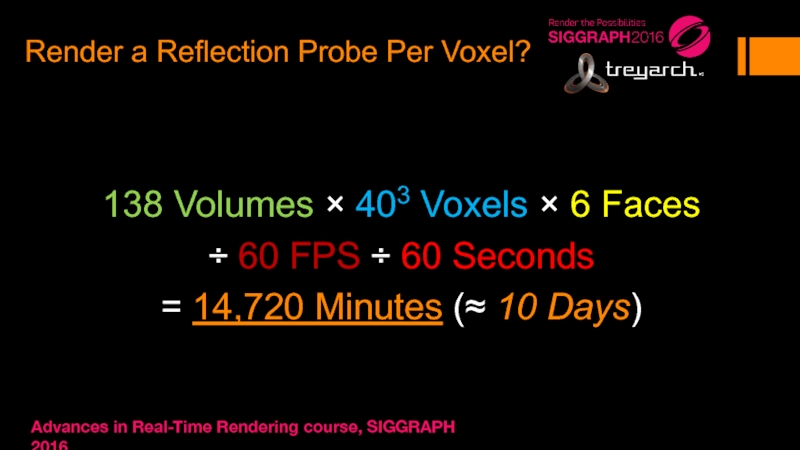
![Volumetric Global Illumination At Treyarch Collect Colors From Reflection ProbesRe-project cube mapsCombine to fill holes [BUEHLER01] Collect Colors From Reflection ProbesRe-project cube mapsCombine to fill holes [BUEHLER01]](/img/thumbs/6968435306bcc39e3e5b5baf78a87437-800x.jpg)


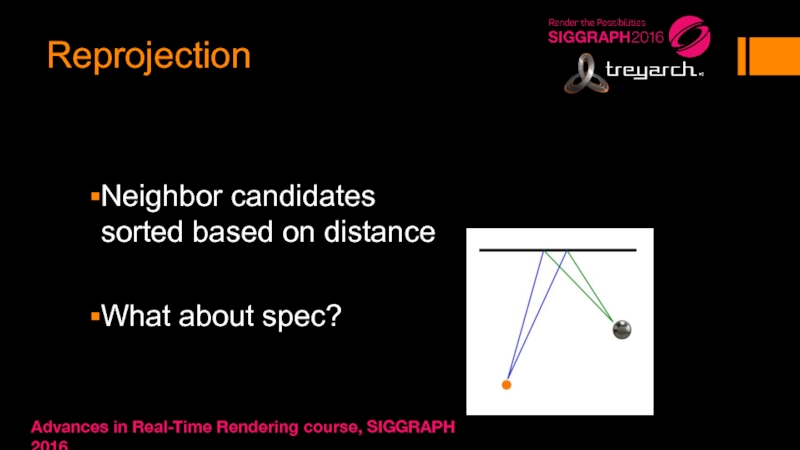






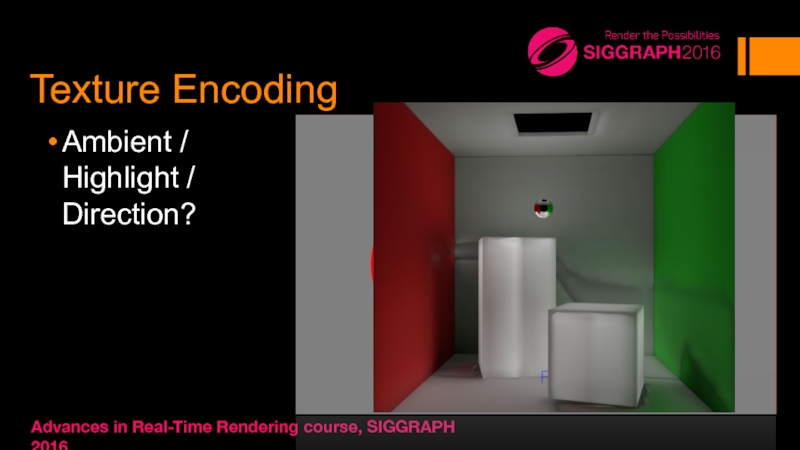

![Volumetric Global Illumination At Treyarch Ambient Cube! [MCTAGGART04]BC6H CompressedTexture Encoding Ambient Cube! [MCTAGGART04]BC6H CompressedTexture Encoding](/img/thumbs/355caba43ee52cd05474efdf22ad67ad-800x.jpg)

![Volumetric Global Illumination At Treyarch Performance BenefitsOnly 3 samplesHardware trilinear filteringEvaluation: color[n] = normal2 ∙ float3( Performance BenefitsOnly 3 samplesHardware trilinear filteringEvaluation: color[n] = normal2 ∙ float3( Xsample[n], Ysample[n], Zsample[n] )color = xVolume.SampleLevel(](/img/thumbs/96de463d3c5b9537191c92c2d19ec0da-800x.jpg)
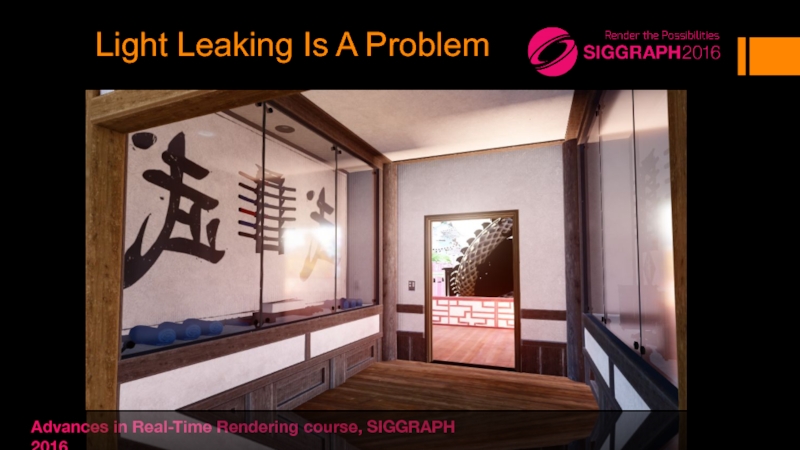
![Volumetric Global Illumination At Treyarch Common ApproachAdjust trilinear Based on normal [SILVENNOINEN15]Our approach needs to be more reliable Common ApproachAdjust trilinear Based on normal [SILVENNOINEN15]Our approach needs to be more reliable](/img/thumbs/e114a6110d6fdadadc7c355320720326-800x.jpg)




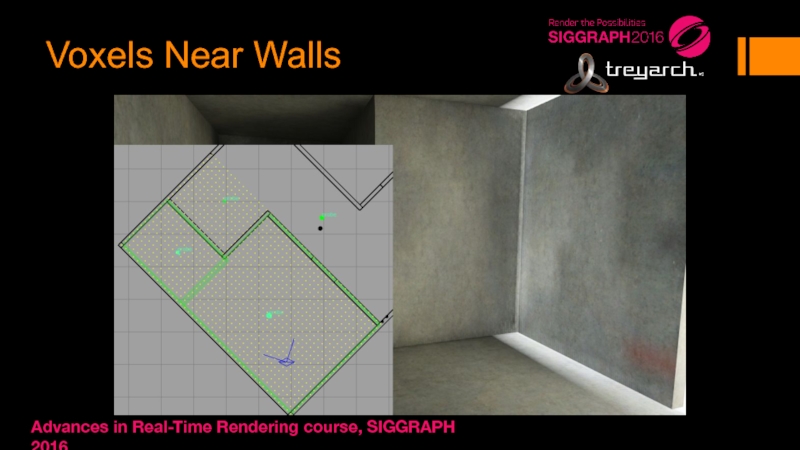




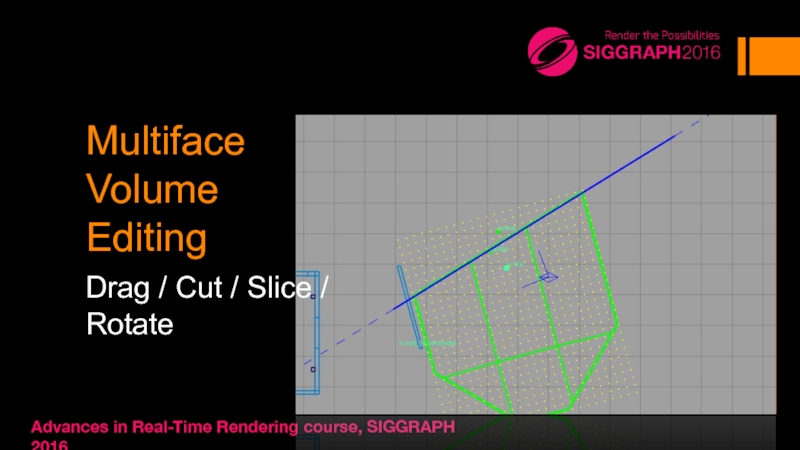

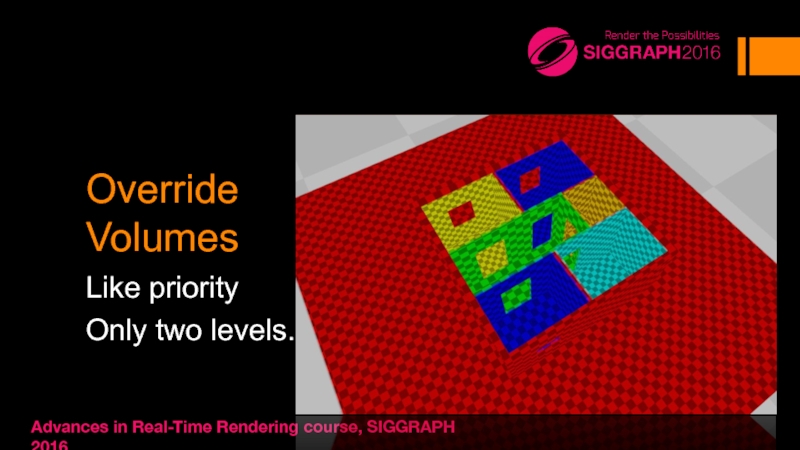

![Volumetric Global Illumination At Treyarch Example GI Volumestruct PlaneGroup { float4 planes[6]; // Groups of six Example GI Volumestruct PlaneGroup { float4 planes[6]; // Groups of six planes. bool subtractive; //](/img/thumbs/f9953a9366dad775345050b7f5a8dfb7-800x.jpg)
![Volumetric Global Illumination At Treyarch Group Size?[6]+[6+6+…?[6]+[4+4+...?[4]+[4+4+…?[8]+[2+2+…? Group Size?[6]+[6+6+…?[6]+[4+4+...?[4]+[4+4+…?[8]+[2+2+…?](/img/thumbs/bd31919dfe36438d3b03b79a1e1e4eae-800x.jpg)

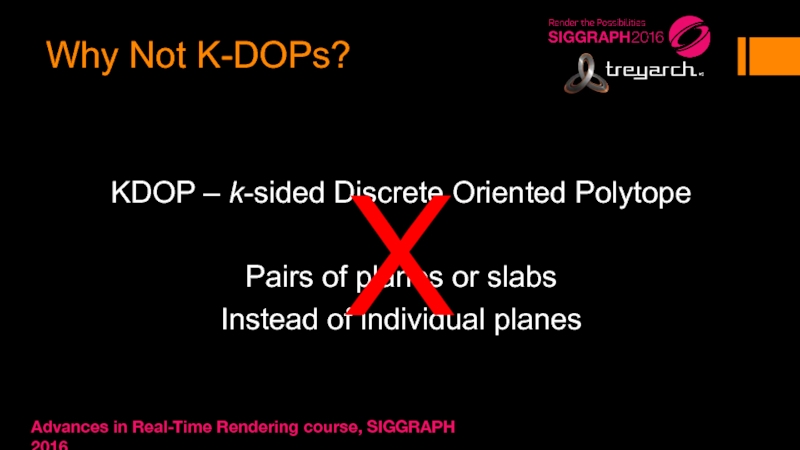












![Volumetric Global Illumination At Treyarch Reflection Planes[LAGARDE12] Reflection Planes[LAGARDE12]](/img/thumbs/98c5752d929de589039a03525e087f5d-800x.jpg)



![Volumetric Global Illumination At Treyarch Reflection Brightness Correction[LAZAROV13] Reflection Brightness Correction[LAZAROV13]](/img/thumbs/244fcbbdd1122fa7e1fbcf05be4b9442-800x.jpg)





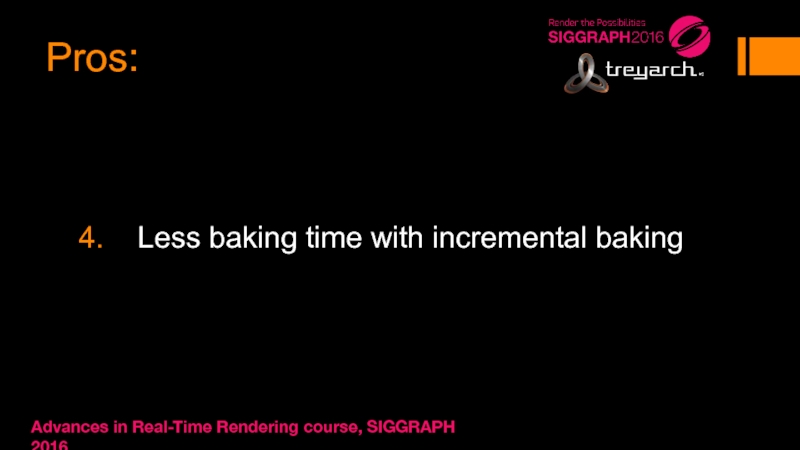




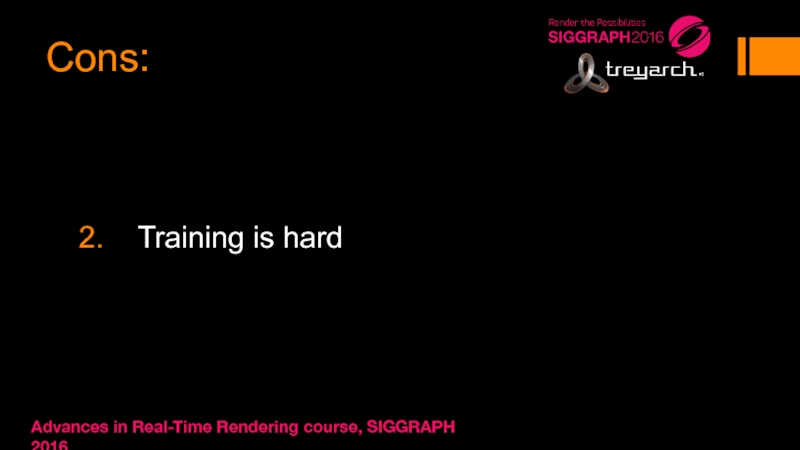




![Volumetric Global Illumination At Treyarch References[DROBOT13] DROBOT, M., 2013. Lighting Killzone: Shadow Fall, Digital Dragons[TATARCHUCK05] TATARCHUK, References[DROBOT13] DROBOT, M., 2013. Lighting Killzone: Shadow Fall, Digital Dragons[TATARCHUCK05] TATARCHUK, N., 2005. Irradiance Volumes for Games,](/img/thumbs/6f202f7ca998558988b718c5837a1916-800x.jpg)














![ДИФФЕРЕНЦИАЦИЯ
ЗВУКОВ [ Л ] – [ Р ]
В СЛОВОСОЧЕТАНИЯХ,
ПРЕДЛОЖЕНИЯХ](/img/tmb/7/638811/01f33de5038c0fd4eacd0ea3d9bda242-800x.jpg)



